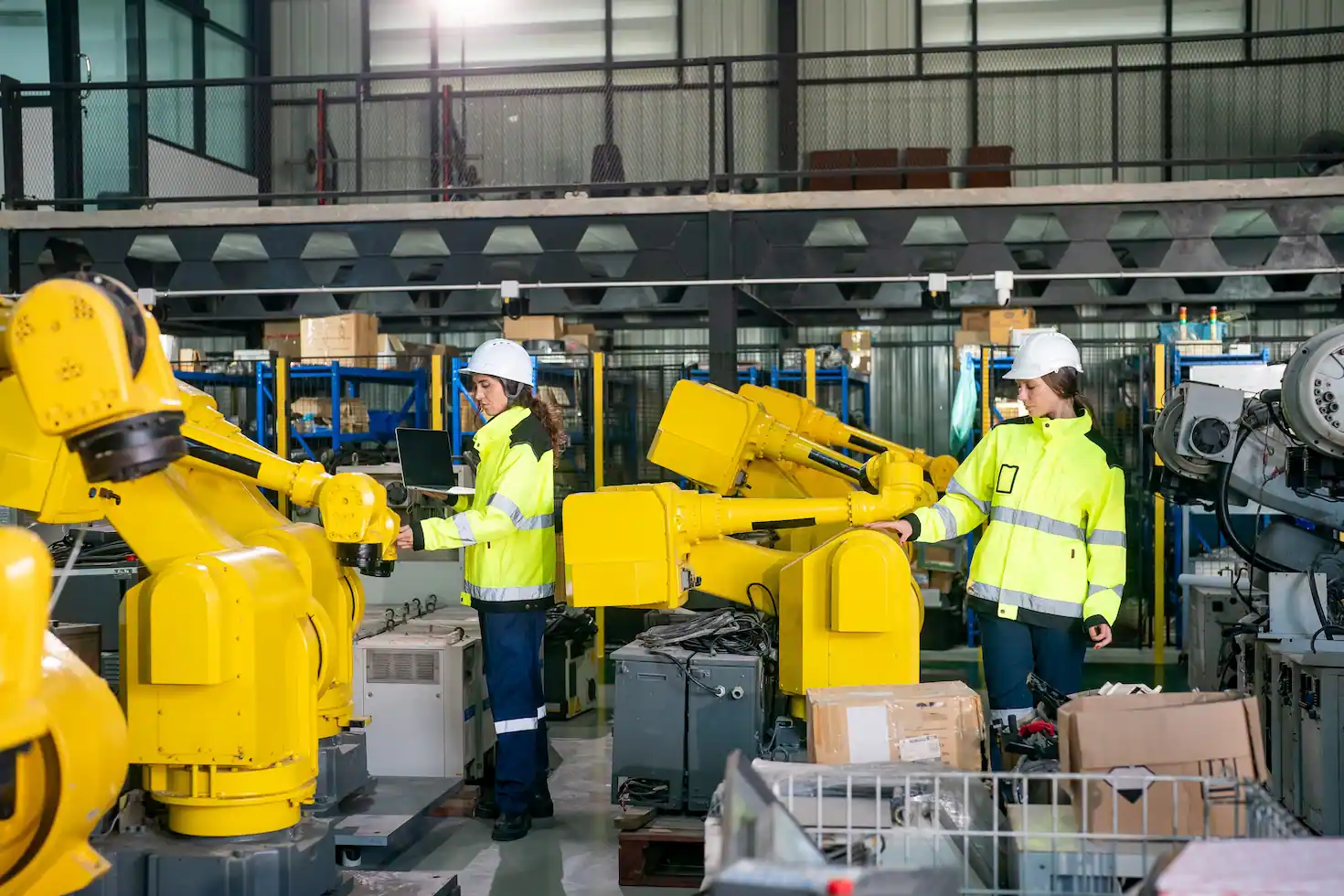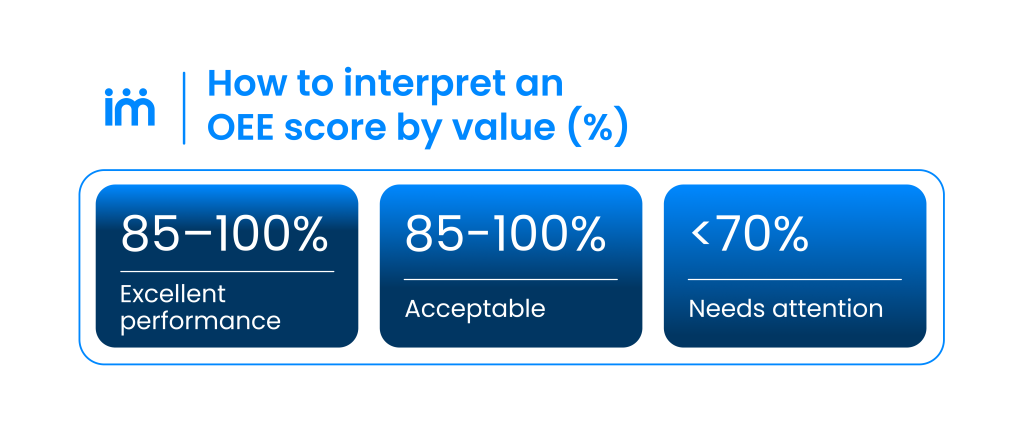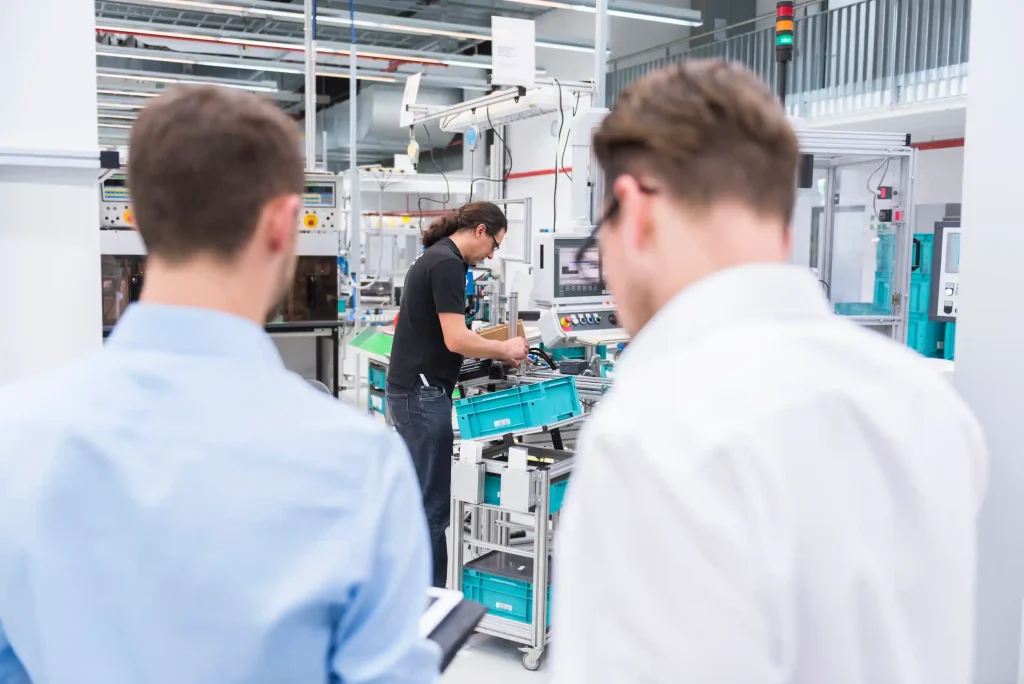OEE (Overall Equipment Effectiveness): Is Your Factory Truly Efficient?

When discussing efficiency in a production plant, it’s easy to think about speed, output volume or unit costs. But in reality, efficiency goes much further. The OEE (Overall Equipment Effectiveness) indicator has become one of the most reliable standards for measuring the true performance of production equipment. More importantly, it supports informed decision-making in the field of planning.
In this article, we’ll explain what OEE is, how to calculate it properly and, above all, how to use it as a decision-making lever within your Supply Chain Planning process.
What is OEE (Overall Equipment Effectiveness) and Why Does it Matter in Production Planning?
OEE is a metric that measures the overall efficiency of a machine, production line or facility by combining three factors: availability, performance and quality. It was popularised by the TPM (Total Productive Maintenance) model and is now considered a key indicator for any operation or planning team.
Unlike other metrics, OEE doesn’t just focus on how much produced, it measures how much productive time is used to make good-quality products. This gives a more complete view of production effectiveness.
Availability, Performance and Quality: The Three Components
To calculate OEE, you need to consider three core components:
- Availability: Measures the actual time the equipment was available to produce, discounting unplanned downtime, breakdowns or format changes.
- Performance: Compares actual production speed to the theoretical or ideal speed.
- Quality: Reflects the percentage of good units out of the total produced.
OEE is calculated by multiplying these three factors and expressing the result as a percentage.
Why OEE is Still Relevant Outside MES Environments
Although OEE is often associated with MES (Manufacturing Execution Systems), it can also be applied in factories without this level of digitalisation. In fact, it’s particularly valuable for organisations looking to professionalise their planning processes, even without full automation.
From a Supply Chain Planning (SCP) perspective, OEE is a key input for comparing theoretical capacity with actual performance, leading to more informed decision-making.
How to Interpret a Low OEE and What it Means for Your Planning
A low OEE doesn’t just mean a line is underperforming. It often signals that the Master Production Schedule (MPS) is built on flawed assumptions, with direct implications for cost, lead times and customer service.
Beyond Efficiency: Impact on Deadlines, Costs and Service
When available capacity is overestimated, unrealistic plans are created. This leads to missed deadlines, urgent orders, unplanned overtime or subcontracting, all with financial and operational consequences.
You’ll also see deviations in material usage, inefficient use of resources and build-up of intermediate stock that adds no value.
Hidden Bottlenecks and Poor Decision-Making
Low OEE on a critical machine can go unnoticed if it’s not being measured. This creates bottlenecks the planner can’t see but which disrupt the entire supply chain. Without this data, decisions may look sound on paper but fail in practice.

What Decisions Can You Make by Monitoring OEE Effectively?
Measuring OEE isn’t just another dashboard KPI. Its true value lies in the decisions it enables. For example:
Reorganising Shifts or Rebalancing Production Lines
If one line runs at 50% OEE and another at 85%, there may be opportunities to redistribute workload, reduce overtime or adjust product assignments for better overall efficiency.
Identifying Equipment Worth Subcontracting or Upgrading
If a critical machine has very low availability, it may be more cost-effective to outsource part of the production or consider investing in a technical upgrade.
Prioritising Orders Based on Actual Operational Performance
In periods of high demand, knowing which lines are fastest and most reliable allows for smarter order prioritisation.
How to Combine OEE with Advanced Production Planning
Integrating OEE (Overall Equipment Effectiveness) with Supply Chain Planning (SCP) tools bridges the gap between the shop floor and strategic planning. The key is translating operational data into strategic action.
Visualising Real vs Theoretical Capacity
SCP typically works with line and work centre capacities. Factoring in OEE helps adjust these based on actual performance. A line with a theoretical capacity of 1,000 units/hour and an OEE of 60% delivers 600 units/hour.
Adjusting Plans in Real-Time Based on Measured Efficiencies
If OEE falls below the expected threshold, planners can reschedule, activate extra shifts or change sequences to protect delivery dates.
Anticipating Issues Through Integrated Visibility
A planner who knows the actual performance levels can detect overload risks before they cause delays or stockouts, and negotiate better with Procurement, Production and Logistics.
How to Calculate OEE Correctly
While there are complex automated versions, calculating OEE (Overall Equipment Effectiveness) doesn’t need to be difficult. You just need to understand the three components and have access to reliable data.
Standard Formula: Availability × Performance × Quality
Availability = (Actual Run Time / Planned Production Time)
Performance = (Actual Output / Theoretical Output)
Quality = (Good Units / Total Units)
Multiplying the three gives your OEE.
Practical Example of OEE Calculation with Real Data
Let’s say you have an 8-hour shift planned:
- 4,000 units were produced (at 500 units/hour).
- There was 1 hour of unplanned downtime.
- Theoretical speed is 600 units/hour.
- 200 units were defective.
Availability: 7h / 8h = 0.875
Performance: 4,000 / (7h × 600) = 0.952
Quality: 3,800 / 4,000 = 0.95
OEE = 0.875 × 0.952 × 0.95 = 0.791 (79.1%)
What Data Sources to Use: Shopfloor Logs, SCADA, etc.
To calculate OEE, you can use different data sources. Operator logbooks offer a hands-on view. SCADA or PLC systems provide automated, real-time data. Production and quality control reports, along with ERP data or complementary software, help consolidate everything into a reliable result.

How to Improve OEE in Low-Tech Environments
Not every factory has continuous improvement systems in place, but improvements can still be made with simple, logical actions.
Simple Actions with Real Impact (5S, Micro-Stops, Changeovers)
To boost efficiency, eliminate waiting times and reduce changeover time using SMED (Single-Minute Exchange of Die). Standardising repetitive tasks ensures quality and consistency, while managing minor breakdowns quickly keeps flow going.
Engaging the Team Without Big Investments
Start with basic OEE training for all staff. A daily 10-minute meeting to review issues helps align the team. Visual boards placed in key areas make it easy to track progress and share objectives.
How to Interpret OEE in Semi-Manual or Highly Variable Factories
OEE doesn’t fit every context perfectly. In factories with high customisation or semi-manual processes, it may need adapting.
Limitations in Craft-Based or Multi-Product Processes
You may not always know what the ideal speed should be. Downtime might depend on operator’s decisions. And quality might be harder to measure objectively, making standardisation a challenge.
Alternatives or Adaptations: Simplified or Tailored OEE
Focus on availability and performance if quality is hard to measure. Define standards per product family and support with productivity ratios for a clearer picture.
OEE (Overall Equipment Effectiveness) as a Planning Compass
As we’ve seen, OEE (Overall Equipment Effectiveness) is more than just a percentage. It’s a precise indicator of how your production processes are performing. By integrating availability, performance and quality, OEE provides a comprehensive view essential to supply chain planning.
The real power of OEE lies in its ability to connect real shopfloor operations with high-level planning. It allows planners to build more realistic MPS and make better-informed decisions about what to produce, when, and with what resources.
Whether you run a fully automated factory or rely on manual processes, monitoring your equipment efficiency gives you a decisive competitive edge. You’ll gain control over your productive capacity, anticipate risks and improve margins and service levels alike.
At Imperia, we help clients improve plant performance and boost supply chain efficiency. Want to find out how? Request a free consultation with one of our experts.

Subscribe to our newsletter and transform your management!
Receive updates and valuable resources that will help you optimise your purchasing and procurement process.